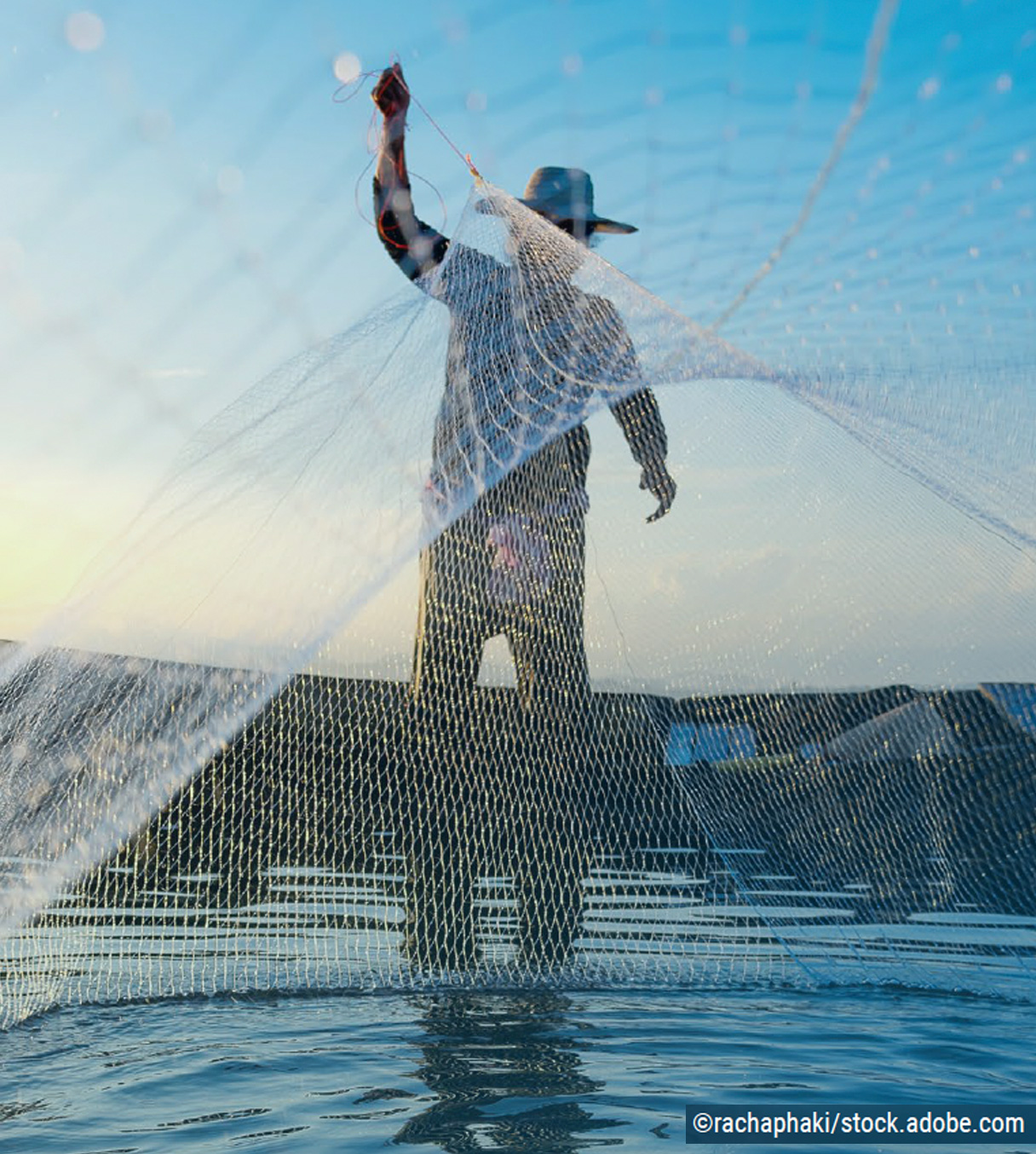

Overall, the SDG 14 policy landscape in Arab countries is well developed, driven in large part by global and regional ocean and biodiversity-related laws, agreements and instruments.
All countries except the Syrian Arab Republic are parties to the United Nations Convention on the Law of the Sea,4 which governs the use and protection of oceans and seas, and defines the rights and responsibilities of nations. SDG target 14.c calls on countries to implement international law as reflected in the Convention.5
Regional seas conventions and associated protocols have helped to shape and harmonize policies related to marine pollution, the conservation of marine living resources and the restoration of critical marine habitats. Notable examples include the Barcelona Convention for the Protection of the Marine Environment and the Coastal Region of the Mediterranean, adopted under the framework of the Mediterranean Action Plan;6 the Jeddah Convention for the Conservation of the Red Sea and Gulf of Aden;7 the Kuwait Convention for Cooperation on the Protection of the Marine Environment from Pollution;8 and the Nairobi Convention for the Protection, Management and Development of Coastal and Marine Environment of the Western Indian Ocean.9
Regional fishery management organizations issue decisions that are binding to their members, thus contributing to harmonized national policies and legislation on fisheries management and aquaculture development. Notable examples include the General Fisheries Commission for the Mediterranean10 and the Regional Commission for Fisheries.11
SDG 14 policies exhibit more commonalities than differences, although national contexts affect priorities and means of implementation. Common trends, which transcend income and geographic subgroupings, are highlighted below.
 Most countries have integrated the prevention of marine pollution within the overall framework of their environmental law and typically use environmental impact assessments in coastal planning and management. Recent examples of legislative gains include the General Order for Environment of Saudi Arabia, adopted in July 2020, and its executive bylaws, which cover marine pollution.12 The framework Law No. 7 of 2022 on the Environment of Bahrain introduced changes to better address new environmental challenges, including those related to marine pollution.13 Few Arab countries have a dedicated framework law on marine pollution; these are in place in Oman (1974), the Syrian Arab Republic (2006) and Yemen (2004).14
Most countries have integrated the prevention of marine pollution within the overall framework of their environmental law and typically use environmental impact assessments in coastal planning and management. Recent examples of legislative gains include the General Order for Environment of Saudi Arabia, adopted in July 2020, and its executive bylaws, which cover marine pollution.12 The framework Law No. 7 of 2022 on the Environment of Bahrain introduced changes to better address new environmental challenges, including those related to marine pollution.13 Few Arab countries have a dedicated framework law on marine pollution; these are in place in Oman (1974), the Syrian Arab Republic (2006) and Yemen (2004).14
 Few countries have taken measures to control marine dumping. Only eight countries are contracting parties to the Convention on the Prevention of Marine Pollution by Dumping of Wastes and Other Matter (the London Convention, 1972) and four are parties to its protocol (the London Protocol, 1996).15 Since the early 2000s, Egypt, Jordan and Oman have issued laws regulating the discharge of waste into the marine environment.16
Few countries have taken measures to control marine dumping. Only eight countries are contracting parties to the Convention on the Prevention of Marine Pollution by Dumping of Wastes and Other Matter (the London Convention, 1972) and four are parties to its protocol (the London Protocol, 1996).15 Since the early 2000s, Egypt, Jordan and Oman have issued laws regulating the discharge of waste into the marine environment.16 Countries endeavour to prevent marine pollution from ships and enforce compliance with related international maritime standards. All countries except the State of Palestine and Yemen are contracting parties to the International Convention for the Prevention of Pollution from Ships17 and have adopted related regulatory frameworks. Ten countries are parties to the International Convention for the Control and Management of Ships’ Ballast Water and Sediments, which requires them to take measures to limit or eliminate the transfer of harmful aquatic organisms and pathogens.18 Through the Riyadh Memorandum of Understanding on Port State Control, maritime authorities in the Gulf Cooperation Council countries have committed to prevent pollution from ships. In 2021, they performed more than 2,500 ship inspections and identified deficiencies related to pollution.19 Similar inspections were conducted by the six countries that are parties to the Memorandum of Understanding on Port State Control in the Mediterranean Region20 and the four parties to the Indian Ocean Memorandum of Understanding on Port State Control.21
Countries endeavour to prevent marine pollution from ships and enforce compliance with related international maritime standards. All countries except the State of Palestine and Yemen are contracting parties to the International Convention for the Prevention of Pollution from Ships17 and have adopted related regulatory frameworks. Ten countries are parties to the International Convention for the Control and Management of Ships’ Ballast Water and Sediments, which requires them to take measures to limit or eliminate the transfer of harmful aquatic organisms and pathogens.18 Through the Riyadh Memorandum of Understanding on Port State Control, maritime authorities in the Gulf Cooperation Council countries have committed to prevent pollution from ships. In 2021, they performed more than 2,500 ship inspections and identified deficiencies related to pollution.19 Similar inspections were conducted by the six countries that are parties to the Memorandum of Understanding on Port State Control in the Mediterranean Region20 and the four parties to the Indian Ocean Memorandum of Understanding on Port State Control.21
 Action against marine debris and plastic pollution is weak but gaining traction, including efforts to assess and understand the dimensions
of the problem.
22 Morocco and Tunisia undertook technical studies to measure marine plastic pollution along their coasts and identify plastic pollution hotspots. They are presently devising national strategies for coastlines without plastic.23 The United Arab Emirates launched an integrated programme to monitor plastic waste in the marine and coastal environment.24 For a detailed analysis of waste management policies, see the chapter on SDG 12.
Action against marine debris and plastic pollution is weak but gaining traction, including efforts to assess and understand the dimensions
of the problem.
22 Morocco and Tunisia undertook technical studies to measure marine plastic pollution along their coasts and identify plastic pollution hotspots. They are presently devising national strategies for coastlines without plastic.23 The United Arab Emirates launched an integrated programme to monitor plastic waste in the marine and coastal environment.24 For a detailed analysis of waste management policies, see the chapter on SDG 12.
 Several Arab countries enforce standards on effluents that can be discharged in the marine environment. Examples include the Ministerial Decision No. 8/1 of 2001 of Lebanon25 and the Ministerial Decision No. 159 of 2005 of Oman.26 In Oman, facilities need to obtain a prior license, and fees are applied depending on discharge volume. Bahrain has established a legislative framework to protect the health of its coral reefs by preventing pollutants from altering the pH level of its waters.27 The Gulf Cooperation Council countries have given special consideration to the discharge of brine from desalination activity; see the subregional trends section of this chapter for more details.
Several Arab countries enforce standards on effluents that can be discharged in the marine environment. Examples include the Ministerial Decision No. 8/1 of 2001 of Lebanon25 and the Ministerial Decision No. 159 of 2005 of Oman.26 In Oman, facilities need to obtain a prior license, and fees are applied depending on discharge volume. Bahrain has established a legislative framework to protect the health of its coral reefs by preventing pollutants from altering the pH level of its waters.27 The Gulf Cooperation Council countries have given special consideration to the discharge of brine from desalination activity; see the subregional trends section of this chapter for more details.
 Most countries have taken steps to expand marine protected areas but several remain behind global targets. A recent positive example is the Comoros, which designated 11 more marine protected areas in 2021, raising the national total to 15. The region counts 122 marine protected areas in 19 countries, with 37 others proposed.28 While marine protected areas represented only 3.6 per cent of the region’s territorial waters in 2020, they covered 35.8 per cent of marine key biodiversity areas in 2022. The average proportion of key biodiversity areas covered by marine protected areas for the 14 countries with available data ranged from
11 per cent in Lebanon to 74 per cent in Algeria. Key biodiversity areas coverage has increased substantially between 2015 and 2022 in some countries, such as in Kuwait (from 13 to 32 per cent) and Morocco (from 42 to 58 per cent). All 14 countries have covered at least 10 per cent of their key biodiversity areas, thereby achieving Aichi target 11.29 Of the 14 countries, 10 have already reached the more ambitious target of covering 30 per cent of key biodiversity areas, as stipulated under the Kunming-Montreal Global Biodiversity Framework (target 3).30
Most countries have taken steps to expand marine protected areas but several remain behind global targets. A recent positive example is the Comoros, which designated 11 more marine protected areas in 2021, raising the national total to 15. The region counts 122 marine protected areas in 19 countries, with 37 others proposed.28 While marine protected areas represented only 3.6 per cent of the region’s territorial waters in 2020, they covered 35.8 per cent of marine key biodiversity areas in 2022. The average proportion of key biodiversity areas covered by marine protected areas for the 14 countries with available data ranged from
11 per cent in Lebanon to 74 per cent in Algeria. Key biodiversity areas coverage has increased substantially between 2015 and 2022 in some countries, such as in Kuwait (from 13 to 32 per cent) and Morocco (from 42 to 58 per cent). All 14 countries have covered at least 10 per cent of their key biodiversity areas, thereby achieving Aichi target 11.29 Of the 14 countries, 10 have already reached the more ambitious target of covering 30 per cent of key biodiversity areas, as stipulated under the Kunming-Montreal Global Biodiversity Framework (target 3).30
 In addition to ecotourism and recreational fishing options, some countries are financially sustaining their marine protected areas by combining them with aquaculture. For example, an aquaculture zone was integrated into the Kuriat Islands protected area in Tunisia , resulting in synergies between marine conservation and job creation, and raising awareness among aquaculture producers.31 Participatory governance approaches are essential for such endeavours to succeed. Decisions to allow commercial activities within and around protected areas must always be taken on a case-by-case basis while using a precautionary approach to reduce risks to biodiversity and habitats.
In addition to ecotourism and recreational fishing options, some countries are financially sustaining their marine protected areas by combining them with aquaculture. For example, an aquaculture zone was integrated into the Kuriat Islands protected area in Tunisia , resulting in synergies between marine conservation and job creation, and raising awareness among aquaculture producers.31 Participatory governance approaches are essential for such endeavours to succeed. Decisions to allow commercial activities within and around protected areas must always be taken on a case-by-case basis while using a precautionary approach to reduce risks to biodiversity and habitats. Most countries have established national marine research institutes and academic marine research programmes and contribute, albeit in a limited way, to regional and global scientific collaboration. The Red Sea Research Center at the King Abdullah University of Science and Technology in Saudi Arabia has several collaborative and interdisciplinary research programmes aiming to develop a predictive ocean model.32 The National Institute of Marine Sciences and Technologies in Tunisia conducts research on aquaculture and marine biotechnology.33 The Institute for Oceanographic Research and Fisheries in Mauritania monitors and carries out research on the marine environment.34 The Bahrain Institute for Pearls and Gemstones researches the sustainability of pearl oyster beds.35 Almost all Arab countries are members of the Global Ocean Observing System and provide data that facilitates research on ocean health.36
Most countries have established national marine research institutes and academic marine research programmes and contribute, albeit in a limited way, to regional and global scientific collaboration. The Red Sea Research Center at the King Abdullah University of Science and Technology in Saudi Arabia has several collaborative and interdisciplinary research programmes aiming to develop a predictive ocean model.32 The National Institute of Marine Sciences and Technologies in Tunisia conducts research on aquaculture and marine biotechnology.33 The Institute for Oceanographic Research and Fisheries in Mauritania monitors and carries out research on the marine environment.34 The Bahrain Institute for Pearls and Gemstones researches the sustainability of pearl oyster beds.35 Almost all Arab countries are members of the Global Ocean Observing System and provide data that facilitates research on ocean health.36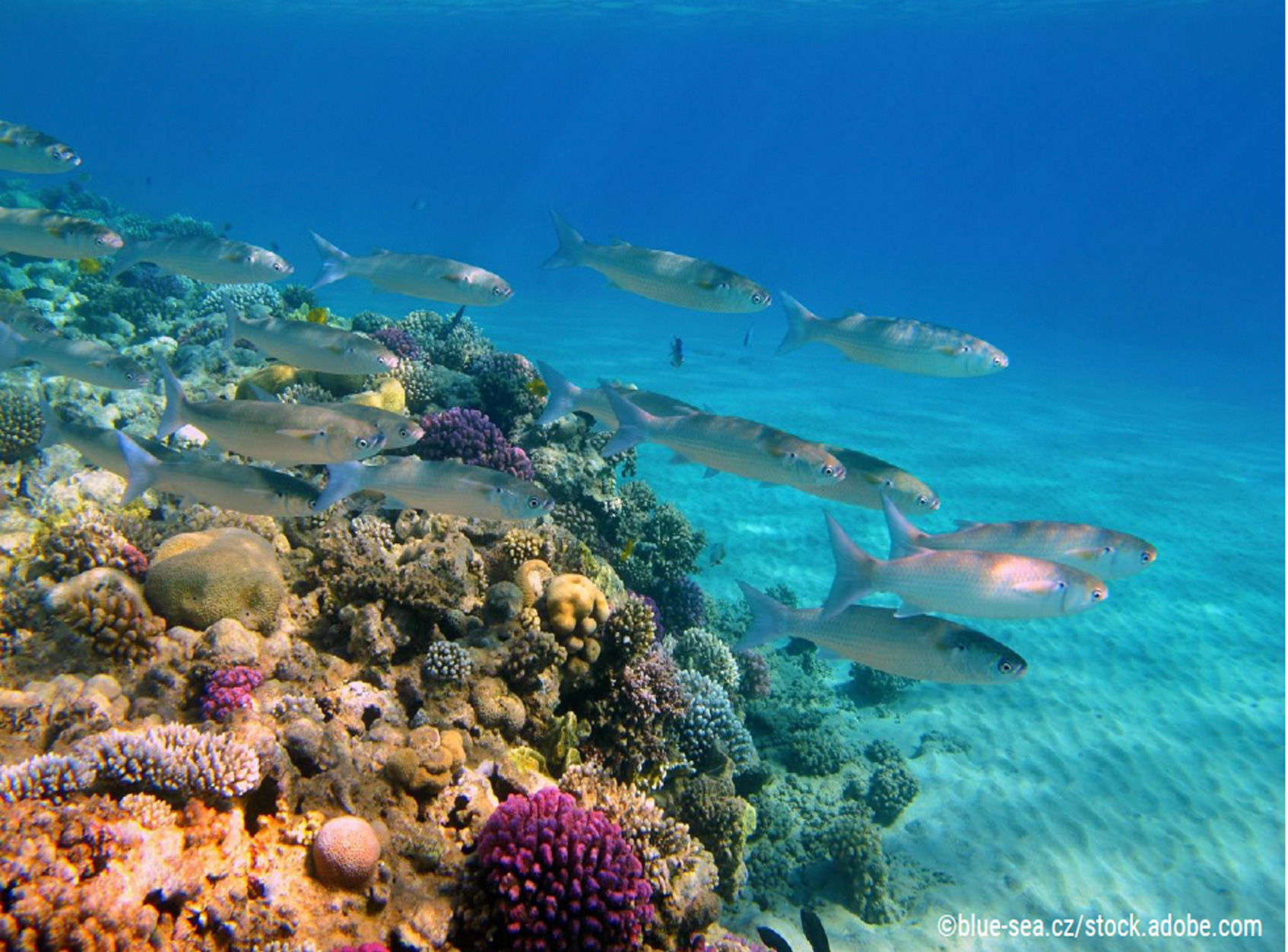
 Almost all countries have a framework law governing the sustainable management of fish stocks.Through numerous implementation decrees, they regulate fishing activity, including permitted fleets and gear, fishing areas and seasons, and catch limits and quotas.37 Good practices include bans on bottom trawling (Bahrain, Kuwait, Oman, Qatar and the United Arab Emirates); application of the precautionary principle (Oman); integration of ecosystem conservation within fisheries management (the Comoros, Kuwait and Somalia); and transparent reporting (Mauritania, the only candidate from the region in the Fisheries Transparency Initiative).38 Responsibilities typically lie with the central government while local responsibilities are limited to the prevention of illegal fishing (such as in Jordan)39 and the provision of information and training (as in Egypt).40
Almost all countries have a framework law governing the sustainable management of fish stocks.Through numerous implementation decrees, they regulate fishing activity, including permitted fleets and gear, fishing areas and seasons, and catch limits and quotas.37 Good practices include bans on bottom trawling (Bahrain, Kuwait, Oman, Qatar and the United Arab Emirates); application of the precautionary principle (Oman); integration of ecosystem conservation within fisheries management (the Comoros, Kuwait and Somalia); and transparent reporting (Mauritania, the only candidate from the region in the Fisheries Transparency Initiative).38 Responsibilities typically lie with the central government while local responsibilities are limited to the prevention of illegal fishing (such as in Jordan)39 and the provision of information and training (as in Egypt).40
 Increasing efforts are being exerted across the region to monitor and assess the status of important fish stocks. The results of these assessments, however, seldom translate into policy. The United Arab Emirates conducted a comprehensive Fisheries Resources Assessment Survey in 2016–2017 that informed its National Framework Statement for Fisheries and Aquaculture 2019–2030.41 Findings were corroborated by several socioeconomic studies, and actions established accordingly to reduce pressure on fisheries, rehabilitate fishery habitats and enhance fish stocks. Countries on the Mediterranean Sea undertake regular stock assessments, on their own and in collaboration with neighbouring countries under the General Fisheries Commission for the Mediterranean, to evaluate the current status and health of commercial stocks and fisheries.42
Increasing efforts are being exerted across the region to monitor and assess the status of important fish stocks. The results of these assessments, however, seldom translate into policy. The United Arab Emirates conducted a comprehensive Fisheries Resources Assessment Survey in 2016–2017 that informed its National Framework Statement for Fisheries and Aquaculture 2019–2030.41 Findings were corroborated by several socioeconomic studies, and actions established accordingly to reduce pressure on fisheries, rehabilitate fishery habitats and enhance fish stocks. Countries on the Mediterranean Sea undertake regular stock assessments, on their own and in collaboration with neighbouring countries under the General Fisheries Commission for the Mediterranean, to evaluate the current status and health of commercial stocks and fisheries.42
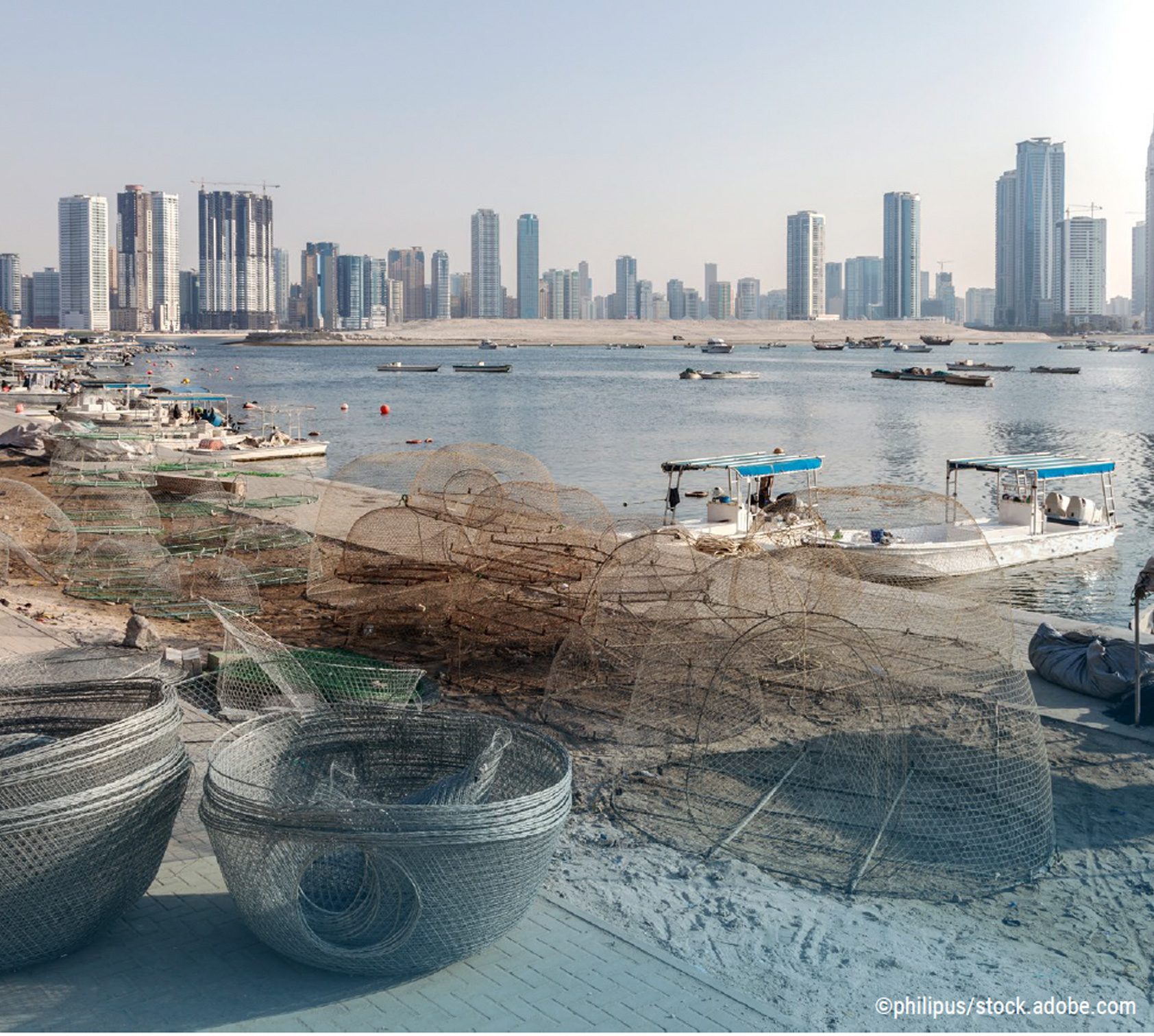
 Several countries are adopting regulations against illegal, unreported and unregulated fishing, and investing in coastal surveillance systems and capacities, including as part of international and regional surveillance efforts. Djibouti, Libya, Mauritania, Morocco, Oman, Somalia and the Sudan are parties to the 2009 Agreement on Port State Measures to Prevent, Deter and Eliminate Illegal, Unreported and Unregulated Fishing;43 Saudi Arabia is in the process of accession.44 Morocco and Oman have taken additional measures, including updating relevant legislation to enable implementation of the agreement. Members of the General Fisheries Commission for the Mediterranean45 engage in measures to ensure their flag, port and coastal State responsibilities are in line with relevant international instruments. Parties to the Indian Ocean Tuna Commission46 and the International Commission for the Conservation of Atlantic Tunas47 are also required
to combat illegal, unreported and unregulated fishing. The Comoros and Somalia are part of FISH-i Africa, a regional cooperation project to better combat such fishing.48
Several countries are adopting regulations against illegal, unreported and unregulated fishing, and investing in coastal surveillance systems and capacities, including as part of international and regional surveillance efforts. Djibouti, Libya, Mauritania, Morocco, Oman, Somalia and the Sudan are parties to the 2009 Agreement on Port State Measures to Prevent, Deter and Eliminate Illegal, Unreported and Unregulated Fishing;43 Saudi Arabia is in the process of accession.44 Morocco and Oman have taken additional measures, including updating relevant legislation to enable implementation of the agreement. Members of the General Fisheries Commission for the Mediterranean45 engage in measures to ensure their flag, port and coastal State responsibilities are in line with relevant international instruments. Parties to the Indian Ocean Tuna Commission46 and the International Commission for the Conservation of Atlantic Tunas47 are also required
to combat illegal, unreported and unregulated fishing. The Comoros and Somalia are part of FISH-i Africa, a regional cooperation project to better combat such fishing.48
 Many countries support small-scale fishers, deploying policies
and programmes to reduce their vulnerability. Morocco
over several decades has progressively extended social security benefits and health coverage explicitly to smaller-scale fishers, amending social security legislation to better account for the seasonality of small-scale fishing activities. In 2012, benefits were extended to non-salaried small-scale fishers. Moreover, Morocco offers specific subsidies for small-scale fisheries, including tax-free fuel at 70 per cent of the market price. The subsidies are managed by small-scale fishers’ cooperatives (see section E for an elaboration on subsidies). Success in Morocco is attributed to policy coherence and close cooperation among government institutions governing social security, fisheries management and port infrastructure.49 The traditional Sunan al Bahr committees in Oman are a sort of fishery councils permitting a participatory and transparent dialogue among different actors.50 Algeria regulates artisanal fisheries and supports the commercialization of their products.51
Many countries support small-scale fishers, deploying policies
and programmes to reduce their vulnerability. Morocco
over several decades has progressively extended social security benefits and health coverage explicitly to smaller-scale fishers, amending social security legislation to better account for the seasonality of small-scale fishing activities. In 2012, benefits were extended to non-salaried small-scale fishers. Moreover, Morocco offers specific subsidies for small-scale fisheries, including tax-free fuel at 70 per cent of the market price. The subsidies are managed by small-scale fishers’ cooperatives (see section E for an elaboration on subsidies). Success in Morocco is attributed to policy coherence and close cooperation among government institutions governing social security, fisheries management and port infrastructure.49 The traditional Sunan al Bahr committees in Oman are a sort of fishery councils permitting a participatory and transparent dialogue among different actors.50 Algeria regulates artisanal fisheries and supports the commercialization of their products.51
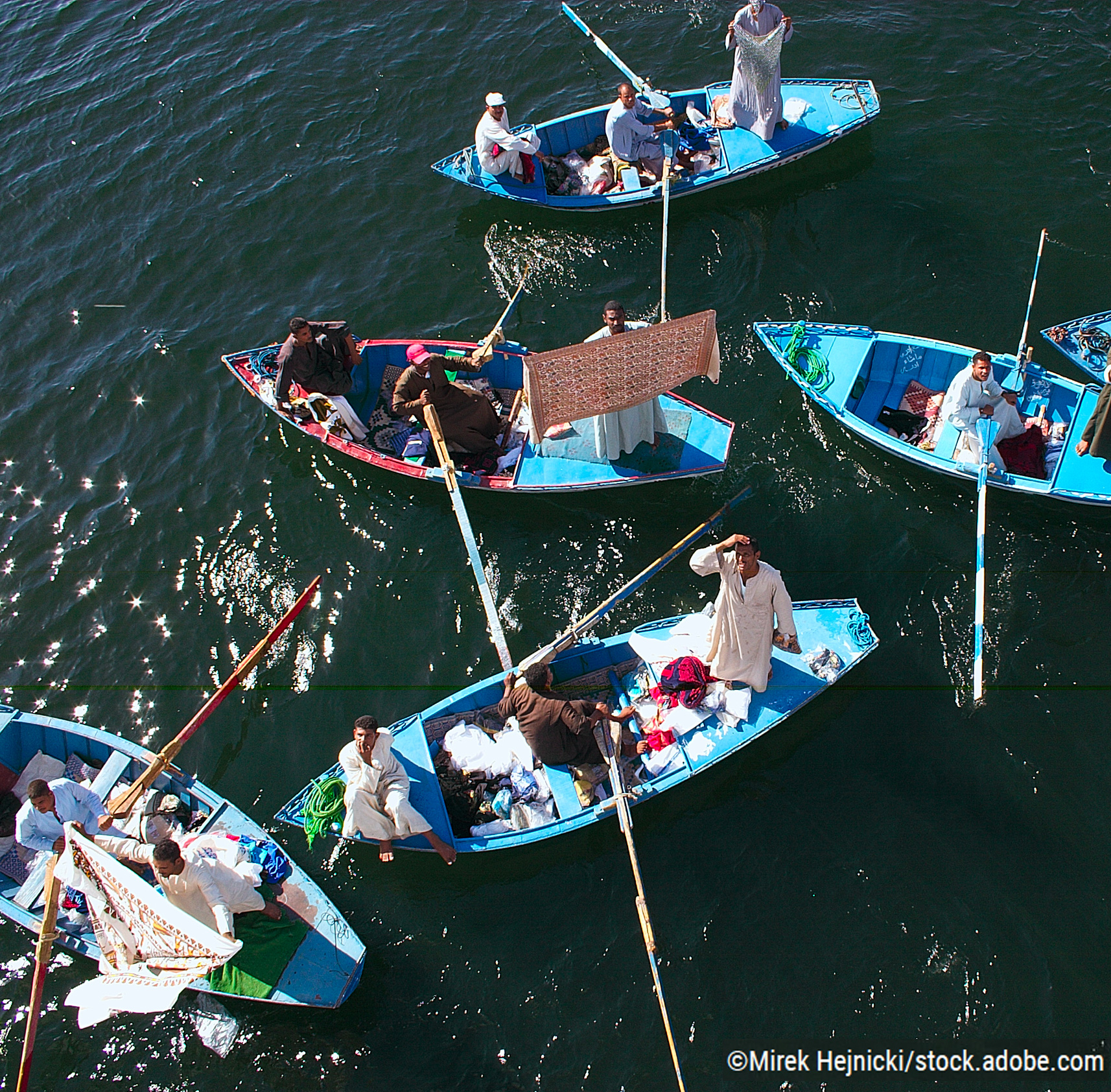
 Countries are stepping up support to facilitate trade, and developing and shortening value chains to improve fishers’ livelihoods. The Behar electronic fish trading market developed by the Ministry of Agriculture and Fisheries in Oman during COVID-19 lockdowns has had a positive impact in facilitating the seafood trade. Tunisia developed a national strategy (2018–2020) to promote an export-oriented value chain for blue crab, an invasive alien species in the gulf of Gabes.52
Countries are stepping up support to facilitate trade, and developing and shortening value chains to improve fishers’ livelihoods. The Behar electronic fish trading market developed by the Ministry of Agriculture and Fisheries in Oman during COVID-19 lockdowns has had a positive impact in facilitating the seafood trade. Tunisia developed a national strategy (2018–2020) to promote an export-oriented value chain for blue crab, an invasive alien species in the gulf of Gabes.52 About half of countries have elaborated a legislative framework to regulate and promote aquaculture activities, often for improved food self-sufficiency and as an income-generating sector. Egypt has been a regional leader on aquaculture since the 1980s. Other countries, including Bahrain, Morocco, Oman, Saudi Arabia and the United Arab Emirates, have more recently dedicated aquaculture development zones.53 Through its 2018 National Aquaculture Policies and Practices,54 Saudi Arabia is developing aquaculture to be the primary source of seafood supply, aiming to attract $4 billion in foreign and local investments into this field.55 Morocco is taking measures to combat aquaculture fish diseases56 and is developing an early warning system for harmful algal blooms to warn shellfish farmers and guarantee aquaculture product safety.57
About half of countries have elaborated a legislative framework to regulate and promote aquaculture activities, often for improved food self-sufficiency and as an income-generating sector. Egypt has been a regional leader on aquaculture since the 1980s. Other countries, including Bahrain, Morocco, Oman, Saudi Arabia and the United Arab Emirates, have more recently dedicated aquaculture development zones.53 Through its 2018 National Aquaculture Policies and Practices,54 Saudi Arabia is developing aquaculture to be the primary source of seafood supply, aiming to attract $4 billion in foreign and local investments into this field.55 Morocco is taking measures to combat aquaculture fish diseases56 and is developing an early warning system for harmful algal blooms to warn shellfish farmers and guarantee aquaculture product safety.57

 Most countries have advanced policies to deal with oil spills, and the rest are catching up. In recent years, Saudi Arabia has conducted intensive environmental disaster simulations and trained about 4,000 individuals, achieving the region’s peak oil spill response capacity of approximately 75,000 barrels.59 The National Contingency Plan of the United Arab Emirates is currently under development. Among oil-exporting middle-income countries, in response to recurrent oil spills (15 over the past 10 years), Algeria has instituted the Tel Bahr mechanism to combat marine pollution from spills and since 2005 has been part of an agreement with Morocco and Tunisia establishing
a subregional emergency plan to tackle accidents in Mediterranean waters.60
Most countries have advanced policies to deal with oil spills, and the rest are catching up. In recent years, Saudi Arabia has conducted intensive environmental disaster simulations and trained about 4,000 individuals, achieving the region’s peak oil spill response capacity of approximately 75,000 barrels.59 The National Contingency Plan of the United Arab Emirates is currently under development. Among oil-exporting middle-income countries, in response to recurrent oil spills (15 over the past 10 years), Algeria has instituted the Tel Bahr mechanism to combat marine pollution from spills and since 2005 has been part of an agreement with Morocco and Tunisia establishing
a subregional emergency plan to tackle accidents in Mediterranean waters.60
 Most countries regulate the discharge of desalination brine, monitor water quality and support research aimed at limiting the impact of desalination on the marine environment. Upper limits on discharged brine salinity are specified in Kuwait, Oman, Saudi Arabia and the United Arab Emirates. The lack of monitoring capacity in some desalination plants, however, affects compliance with discharge standards.61
Most countries regulate the discharge of desalination brine, monitor water quality and support research aimed at limiting the impact of desalination on the marine environment. Upper limits on discharged brine salinity are specified in Kuwait, Oman, Saudi Arabia and the United Arab Emirates. The lack of monitoring capacity in some desalination plants, however, affects compliance with discharge standards.61Warm waters around tropical and subtropical countries have significant coral reefs and mangrove forest areas.
 These countries have programmes to conserve and expand mangrove forests, including projects applying nature-based solutions to climate change. Bahrain committed to quadrupling mangrove coverage across coastal areas by 2035, part of its plan to achieve net-zero by 2060. It has signed memorandums of understanding with government and private sector companies to conserve the mangroves.62 In 2016, Djibouti cleaned 40 hectares of mangroves and planted 125,000 mangroves over an area of 114 hectares. A mangrove nursery was established in 2018.63 The United Arab Emirates has led global efforts to conserve and restore mangrove ecosystems. It recently endorsed the Mangrove Breakthrough and launched the Mangrove Alliance for Climate.64
These countries have programmes to conserve and expand mangrove forests, including projects applying nature-based solutions to climate change. Bahrain committed to quadrupling mangrove coverage across coastal areas by 2035, part of its plan to achieve net-zero by 2060. It has signed memorandums of understanding with government and private sector companies to conserve the mangroves.62 In 2016, Djibouti cleaned 40 hectares of mangroves and planted 125,000 mangroves over an area of 114 hectares. A mangrove nursery was established in 2018.63 The United Arab Emirates has led global efforts to conserve and restore mangrove ecosystems. It recently endorsed the Mangrove Breakthrough and launched the Mangrove Alliance for Climate.64 Tropical and subtropical countries are investing
in artificial reefs and coral farming to help restore and rehabilitate degraded coastal and marine ecosystems.
Bahrain
launched the national artificial reef project in 2023 to introduce new artificial habitats to bolster the growth of marine organisms, support biodiversity and rehabilitate damaged coral reefs.65 Saudi Arabia is deploying advanced coral reef restoration technologies that enhance thermal resilience and is bringing together national stakeholders to scale up reef restoration through cost-effective options.66 The Marine Environment Research Centre of the United Arab Emirates has a recent focus on super corals.67 Jordan undertook several coral farming operations, with a good success rate.68 Egypt plans to install coral nurseries off the coast of Hurghada to grow corals that can be replanted in damaged reef areas.69 The use of structures made of organic material prevents them from becoming a source of marine pollution.
Tropical and subtropical countries are investing
in artificial reefs and coral farming to help restore and rehabilitate degraded coastal and marine ecosystems.
Bahrain
launched the national artificial reef project in 2023 to introduce new artificial habitats to bolster the growth of marine organisms, support biodiversity and rehabilitate damaged coral reefs.65 Saudi Arabia is deploying advanced coral reef restoration technologies that enhance thermal resilience and is bringing together national stakeholders to scale up reef restoration through cost-effective options.66 The Marine Environment Research Centre of the United Arab Emirates has a recent focus on super corals.67 Jordan undertook several coral farming operations, with a good success rate.68 Egypt plans to install coral nurseries off the coast of Hurghada to grow corals that can be replanted in damaged reef areas.69 The use of structures made of organic material prevents them from becoming a source of marine pollution.
 Some countries have adopted integrated coastal zone management strategies but are still in the early phases of implementation. Algeria in 2002 enacted a coastal law that, among other provisions, limits construction along the coast.70 In 2015, Algeria developed its First National Integrated Coastal Zone Management Strategy, which laid the foundations of its 2022 National Blue Economy Strategy 2030.71 There are few evaluations of the success of coast zone management implementation in the country, however, with some indications of challenges related to coastal monitoring, coordination and the participation of stakeholders.72
Some countries have adopted integrated coastal zone management strategies but are still in the early phases of implementation. Algeria in 2002 enacted a coastal law that, among other provisions, limits construction along the coast.70 In 2015, Algeria developed its First National Integrated Coastal Zone Management Strategy, which laid the foundations of its 2022 National Blue Economy Strategy 2030.71 There are few evaluations of the success of coast zone management implementation in the country, however, with some indications of challenges related to coastal monitoring, coordination and the participation of stakeholders.72
 As contracting parties to the Barcelona Convention, countries along the Mediterranean have committed to curbing harmful air pollutants emitted from ships. In late 2022, the Mediterranean Sea was designated an emissions control area for sulfur oxides and particulate matter. It
is the first marine area in the Arab region to have such
a designation and the fifth area worldwide.75 Starting in May 2025, ships travelling through the Mediterranean will need to cut sulfur content in fuel oil by four fifths. This will significantly reduce sulfur oxide emissions and help lower emissions of particulate matter. These measures are expected to benefit both aquatic and land ecosystems, including by preventing acidification.
As contracting parties to the Barcelona Convention, countries along the Mediterranean have committed to curbing harmful air pollutants emitted from ships. In late 2022, the Mediterranean Sea was designated an emissions control area for sulfur oxides and particulate matter. It
is the first marine area in the Arab region to have such
a designation and the fifth area worldwide.75 Starting in May 2025, ships travelling through the Mediterranean will need to cut sulfur content in fuel oil by four fifths. This will significantly reduce sulfur oxide emissions and help lower emissions of particulate matter. These measures are expected to benefit both aquatic and land ecosystems, including by preventing acidification.
 The least developed countries are engaging civil society organizations and local communities in the everyday management of marine protected areas, with positive impacts in terms of mobilizing community support, fostering a sense of ownership and increasing compliance with marine protected area regulations. The national legal framework governing marine protected areas, however, should permit such co-management practices or otherwise be reviewed to do so. More could be gained if participatory, community-based monitoring systems were also strengthened. In the Comoros, 79 co-management agreements with village communities were signed between 2015 and 2022. Three of these agreements are with groups of women fishers.76
The least developed countries are engaging civil society organizations and local communities in the everyday management of marine protected areas, with positive impacts in terms of mobilizing community support, fostering a sense of ownership and increasing compliance with marine protected area regulations. The national legal framework governing marine protected areas, however, should permit such co-management practices or otherwise be reviewed to do so. More could be gained if participatory, community-based monitoring systems were also strengthened. In the Comoros, 79 co-management agreements with village communities were signed between 2015 and 2022. Three of these agreements are with groups of women fishers.76 Fisheries management policies in the least developed countries reflect a clear link to job creation and food security objectives. In Mauritania, the National Responsible Management Strategy for the Sustainable Development
of Fisheries and the Maritime Economy 2015–2019 gave priority to the development of essential infrastructure, value-added industries and services, training on sea trades, and the promotion of health control and the quality of fishing products.77 The Comoros in 2018 elaborated a strategic framework for a national blue economy policy to stir public and private investments in fisheries and other sectors.78
Fisheries management policies in the least developed countries reflect a clear link to job creation and food security objectives. In Mauritania, the National Responsible Management Strategy for the Sustainable Development
of Fisheries and the Maritime Economy 2015–2019 gave priority to the development of essential infrastructure, value-added industries and services, training on sea trades, and the promotion of health control and the quality of fishing products.77 The Comoros in 2018 elaborated a strategic framework for a national blue economy policy to stir public and private investments in fisheries and other sectors.78
 Some countries in conflict are seeking to curb marine pollution by improving wastewater and solid waste management and bridging information gaps. Before the 2023 Gaza war, enhancing wastewater management, treatment and reuse had been key targets of a national policy to clean up the coastline of Gaza. A series of assessments was underway to establish a monitoring and evaluation system to track the effects of climate change, pollution and unregulated construction along the Gaza coastline. Achieving maritime sustainability is now largely constrained by the Israeli occupation and restricted access to territorial waters in Gaza. Limiting fishing activity to shallow water is depleting fish stocks.79
Some countries in conflict are seeking to curb marine pollution by improving wastewater and solid waste management and bridging information gaps. Before the 2023 Gaza war, enhancing wastewater management, treatment and reuse had been key targets of a national policy to clean up the coastline of Gaza. A series of assessments was underway to establish a monitoring and evaluation system to track the effects of climate change, pollution and unregulated construction along the Gaza coastline. Achieving maritime sustainability is now largely constrained by the Israeli occupation and restricted access to territorial waters in Gaza. Limiting fishing activity to shallow water is depleting fish stocks.79
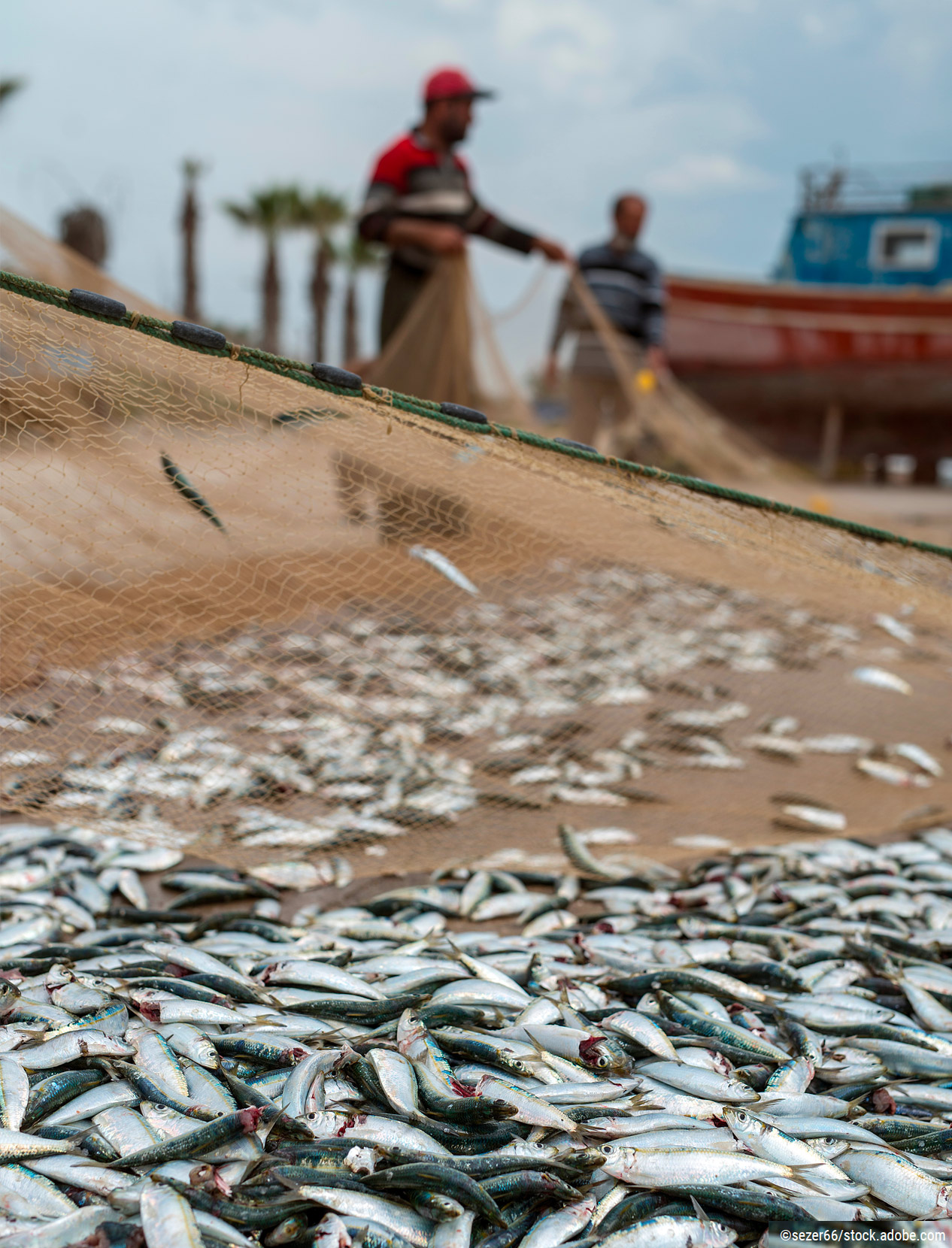

 |
Small-scale and artisanal fishers constitute a significant proportion of fishing activity in the region, yet are largely unprotected and lack access to financial and technical support services. | The 2019 Constitution of Egypt commits the State to protect and support fishers. a The Barr Aman initiative provides 42,000 fishers nationwide with environmentally friendly tools to support their work as well as low-interest micro-loans to support livelihoods during periods when fishing is limited. The initiative has an allocated budget of about EGP 50 million ($3.19 million). b Egypt included small-scale fishers in its nationally determined contribution to adapt to the impact of climate change. c |
|---|---|---|
 |
Women involved in fishing and the processing and trade of fish and fishery products tend to work in harsh conditions and receive low pay. They are weakly represented in fisheries and marine area management and policymaking. | In the Comoros, co-management agreements were signed from 2020 to 2022 with women fishers to protect marine areas in Chidini, Malé and Oureveni. d The agreements were expected to ensure the engagement of fishing communities in decision-making an d the implementation of various protection actions, and to facilitate exchanges of knowledge and good practices while improving the income of workers at sea and their living conditions. e |
 |
Youth are less attracted to the fishing sector due to low pay and appeal. | The economic vision 2040 of Oman calls for the fisheries sector to be increasingly managed and financed by Omanis and to employ young Omanis at competitive rates. One approach being pursued is to develop hygienic and digitally connected fish markets to encourage young, educated Omanis, both male and female, to get involved in the fishing sector across the value chain. f |

| Country | Beneficiala | Capacity-enhancingb | Ambiguousc | Grand total |
|---|---|---|---|---|
| Algeria | 13.0 | 6.7 | 208.4 | 228.1 |
| Bahrain | 1.1 | 13.6 | 11.2 | 25.9 |
| Comoros | 0.1 | 3.4 | 55.7 | 59.2 |
| Djibouti | 0.4 | 1.9 | 3.2 | 5.4 |
| Egypt | 0.0 | 25.1 | 48.4 | 73.6 |
| Iraq | 0.0 | 0.6 | 0.5 | 1.1 |
| Jordan | 0.0 | 0.1 | Negligible | 0.1 |
| Kuwait | 0.0 | 8.1 | 2.6 | 10.7 |
| Lebanon | 0.0 | 1.6 | 0.4 | 2.0 |
| Libya | 0.0 | 16.2 | 0.0 | 16.2 |
| Mauritania | 4.4 | 4.4 | 28.9 | 37.7 |
| Morocco | 10.3 | 78.0 | 208.4 | 296.8 |
| Oman | 6.2 | 61.9 | 84.6 | 152.7 |
| Qatar | 1.7 | 19.2 | 5.7 | 26.6 |
| Saudi Arabia | 3.8 | 39.4 | 17.7 | 61.0 |
| Somalia | 1.4 | 2.3 | 0.4 | 4.1 |
| Sudan | Negligible | 1.4 | 1.4 | 2.8 |
| Syrian Arab Republic | 0.0 | 0.6 | 0.0 | 0.6 |
| Tunisia | 0.0 | 1.6 | 86.7 | 88.3 |
| United Arab Emirates | 0.0 | 38.0 | 4.9 | 42.9 |
| Yemen | 0.0 | 38.4 | 142.4 | 180.8 |
| Grand total | 42.5 | 362.7 | 911.4 | 1,316.6 |
| Country | 2013 | 2017 |
|---|---|---|
| Kuwait | NA | 2.3 |
| Mauritania | 5.3 | 4.5 |
| Morocco | 7.3 | 6.7 |
| Oman | 14.3 | 16.9 |
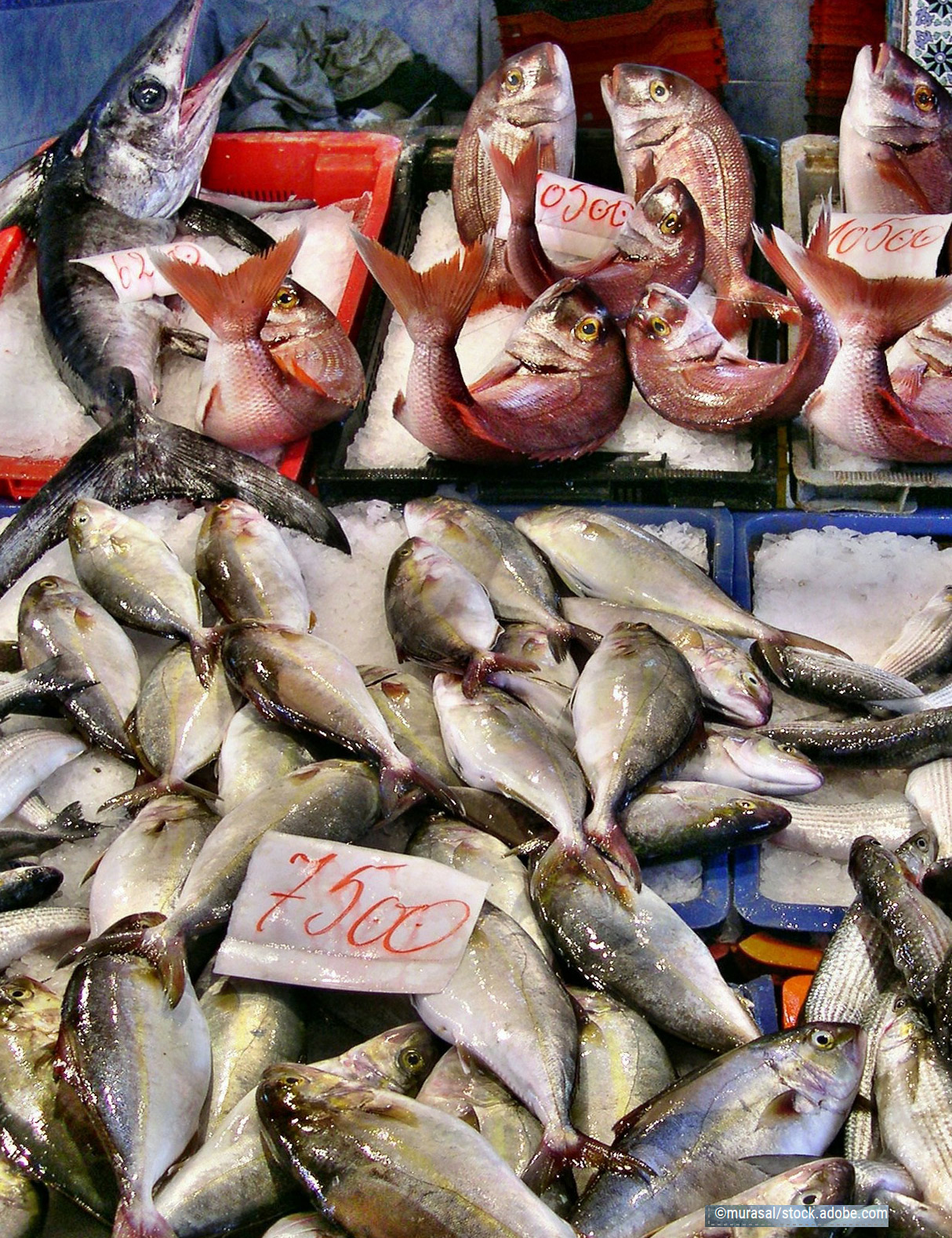
| Country | Revenue (constant 2020 dollars, millions) |
Percentage from small-scale fisheries |
|---|---|---|
| Tunisia | 321 | 37 |
| Egypt | 263 | 16 |
| Algeria | 239 | 6 |
| Morocco | 66 | 32 |
| Lebanon | 14 | 56 |
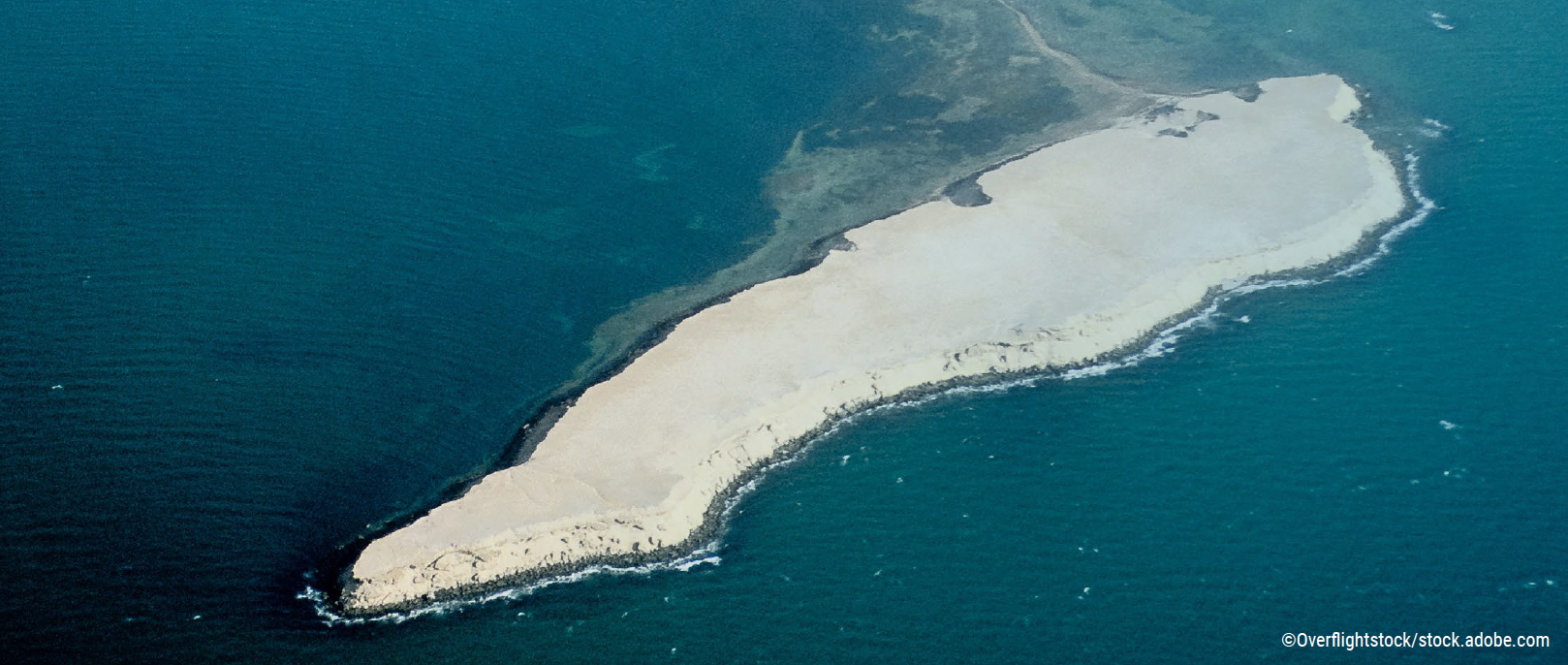
| Country | Official development assistance for the ocean economy (committed, millions of dollars)) | Official development assistance for the sustainable ocean economy (committed, millions of dollars) | Percentage sustainable (committed) |
|---|---|---|---|
| Morocco | 2,118.54 | 220.69 | 10 |
| Iraq | 416.22 | 0.59 | Negligible |
| Somalia | 410.61 | 44.85 | 11 |
| Egypt | 314.56 | 17.34 | 6 |
| Mauritania | 291.99 | 201.04 | 69 |
| Djibouti | 245.22 | 14.06 | 6 |
| Yemen | 178.97 | 41.71 | 23 |
| Tunisia | 152.13 | 82.22 | 54 |
| Libya | 127.02 | 3.71 | 3 |
| Lebanon | 121.25 | 110.33 | 91 |
| Jordan | 119.35 | 4.40 | 4 |
| Algeria | 76.91 | 69.54 | 90 |
| Comoros | 28.02 | 19.71 | 70 |
| Sudan | 25.41 | 16.93 | 67 |
| State of Palestine | 18.07 | 10.39 | 57 |
| Oman | 3.89 | 0.15 | 4 |
| Syrian Arab Republic | 1.66 | 0.96 | 58 |
| Region | 4,649.80 | 858.61 | 18 |

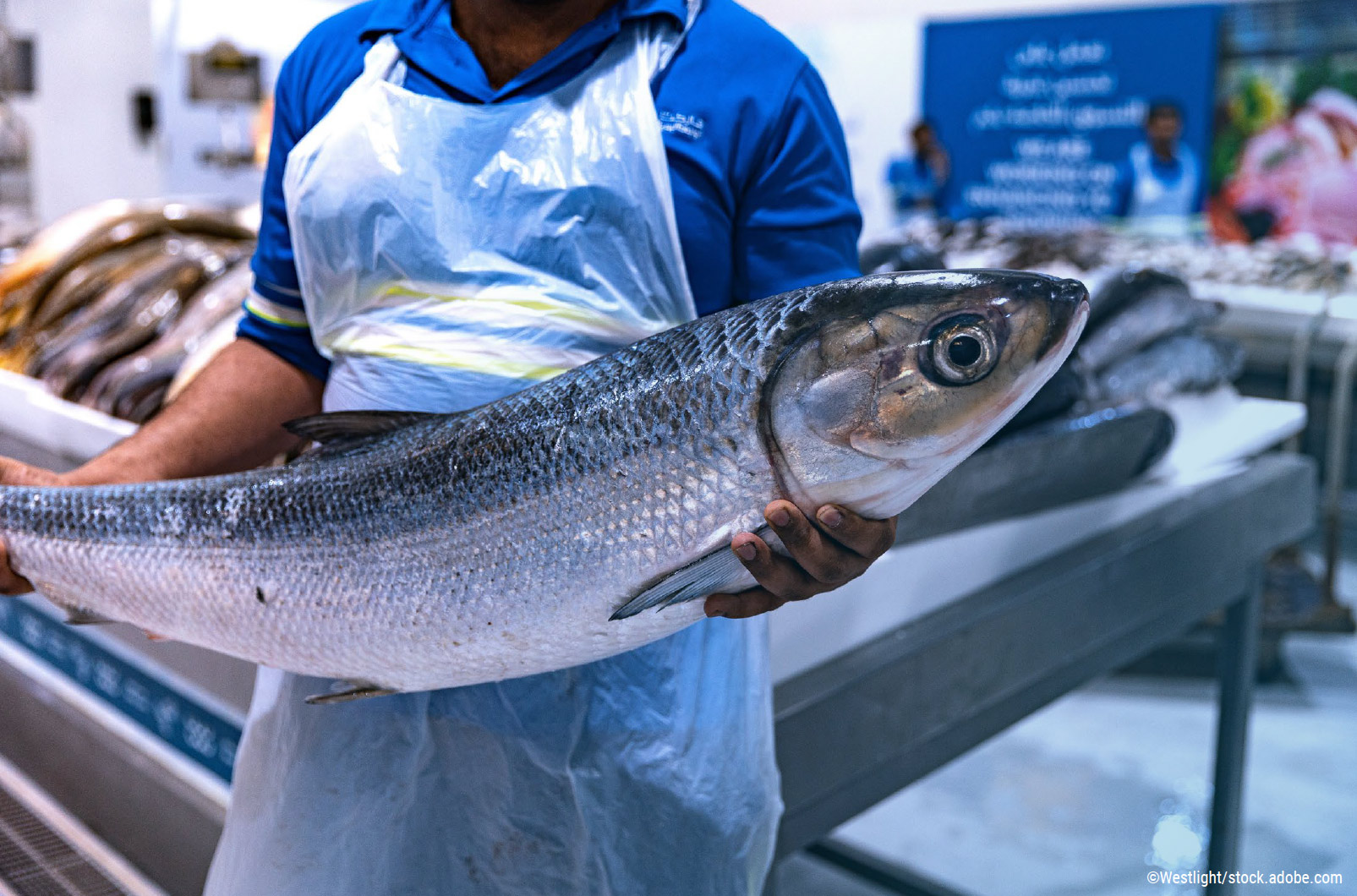

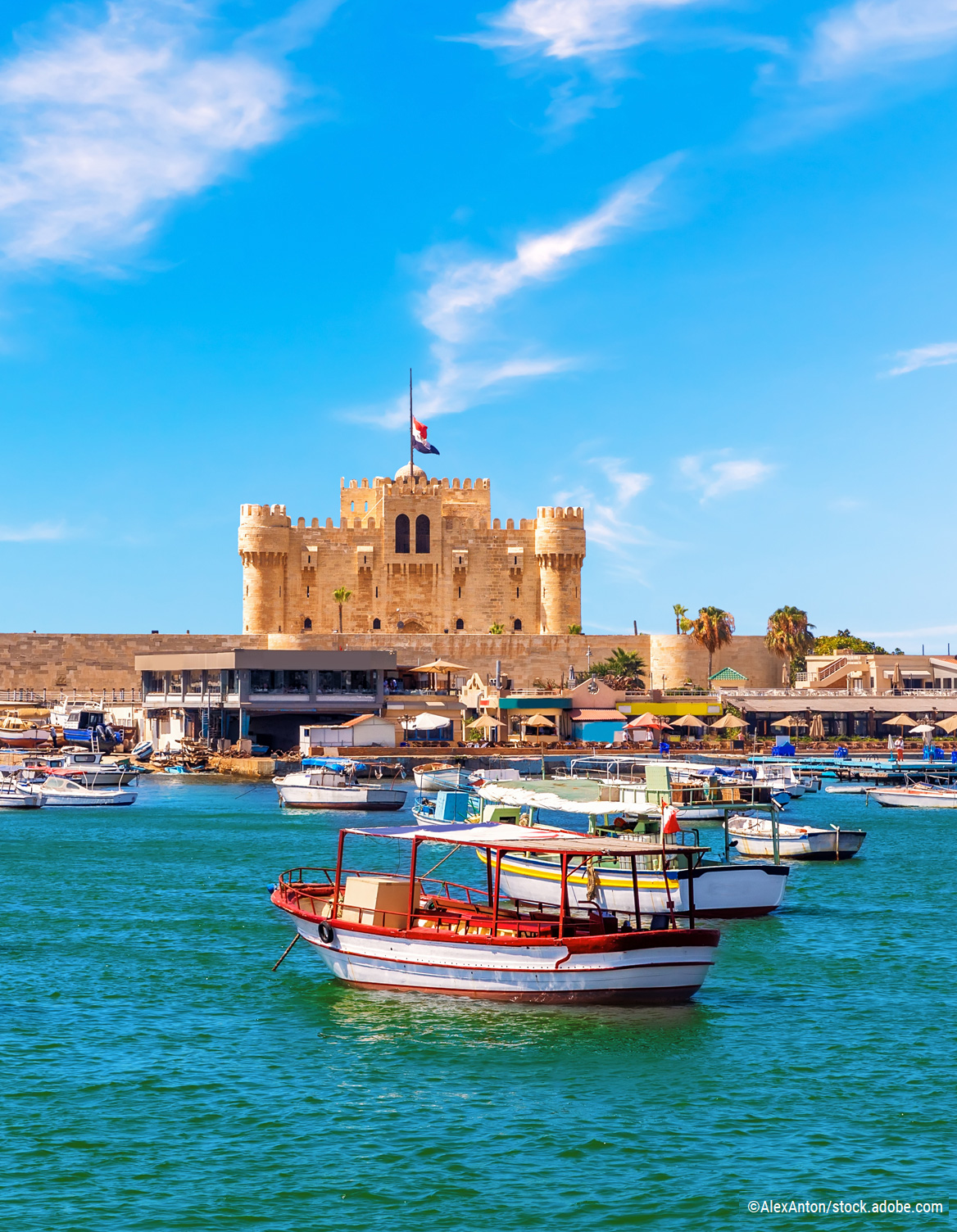
1. Mediterranean Sea, Red Sea, Arabian Sea, Indian Ocean (Western) and Atlantic Ocean (Eastern Central).
2. All Arab countries enjoy access to oceans or seas, with coastlines ranging from 27 kilometres (Jordan) to 3,330 kilometres (Somalia). See Somalia, Voluntary National Review 2022, see Jordan, Voluntary National Review 2022.
3. https://sdgs.un.org/goals/goal14.
4. The Convention is the most notable and comprehensive legally binding ocean-related instrument. It was adopted in 1982 and entered into force in 1994. See the list of Contracting Parties.
5. Information on the implementation of the Convention (SDG indicator 14.c.1) by Arab countries is largely lacking, except for Iraq and Qatar (at 13 per cent and 80 per cent in 2021, respectively, reflecting high disparities).
6. Contracting parties include Algeria, Egypt, Lebanon, Libya, Morocco, the Syrian Arab Republic and Tunisia.
7. All Contracting Parties to the Convention are Arab countries; they include Djibouti, Egypt, Jordan, Saudi Arabia, Somalia, the Sudan and Yemen.
8. The Convention covers the area under the Regional Organization for the Protection of the Marine Environment. In addition to Iran, Member States from the Arab region include the Gulf Cooperation Council countries and Iraq.
9. Contracting parties include the Comoros and Somalia.
10. Contracting parties include Algeria, Egypt, Lebanon, Libya, Morocco, the Syrian Arab Republic and Tunisia.
11. In addition to Iran, member States from the Arab region include Bahrain, Iraq, Kuwait, Oman, Qatar, Saudi Arabia and the United Arab Emirates.
12. See Saudi Arabia, Voluntary National Review 2023.
13. See Bahrain, Voluntary National Review 2023.
14. See FAOLEX Database, accessed on 4 August 2023.
15. See IMO, Status of Conventions, accessed on 9 August 2023. Parties to the London Convention are: Egypt, Jordan, Libya, Morocco, Oman, the Syrian Arab Republic, Tunisia and the United Arab Emirates. Parties to the London Protocol are: Egypt, Libya, Saudi Arabia and Yemen.
16. See FAOLEX Database, accessed on 4 August 2023.
17. Including the Convention’s Annexes I and II, related to pollution by oil, and noxious liquid substances carried in bulk, respectively. Of the 20 countries, 18 are also parties to Annexes III, IV and V related to harmful substances carried in packaged form, sewage and garbage, respectively. Seven are parties to Annex VI related to air pollution. See IMO, Status of Conventions. Accessed on 9 August 2023.
18. Egypt, Iraq, Jordan, Lebanon, Morocco, Oman, Qatar, Saudi Arabia, the Syrian Arab Republic and the United Arab Emirates. The Convention entered into force in 2017.
19. See the Riyadh Memorandum of Understanding on Port State Control.
20. Algeria, Egypt, Jordan, Lebanon, Morocco, and Tunisia. See more on the agreement.
21. The Comoros, Oman, the Sudan and Yemen. See more on the agreement.
22. The United Nations Environment Assembly adopted a resolution in 2022 to develop an international legally binding instrument on plastic pollution, including in the marine environment, by 2024. The Jordanian Ministry of Environment is one of the 10 members of the Bureau. See more here.
23. World Bank, 2022.
24. Zawya, 2023.
25. See FAOLEX Database on Lebanon.
26. See FAOLEX Database on Oman.
27. See Bahrain, Voluntary National Review 2023.
28. See the Protected Planet database, accessed on 15 June 2023. Morocco tops the list, with 20 marine protected areas established and two more proposed. Djibouti, Iraq and the State of Palestine do not have designated marine protected areas (four are proposed for Djibouti).
29. See the Convention on Biological Diversity.
30. See target 3.
31. IUCN, 2021.
32. See more on the programmes of the Red Sea Research Center.
33. See more on the Institut National des Sciences et Technologies de la Mer.
34. See Mauritania, Voluntary National Review 2019.
35. DANAT, n.d.
36. See the Ocean Observing System Report Card 2023, accessed on 31 January 2023.
37. See FAOLEX Database, accessed on 4 August 2023.
38. See the Fisheries Transparency Initiative on Mauritania.
39. See the European Committee of the Regions on the Jordan Fisheries Policy.
40. See the European Committee of the Regions on the Egypt Fisheries Policy.
41. See the United Arab Emirates, National Framework Statement for Fisheries and Aquaculture 2019-2030.
42. See the stock assessment forms of the General Fisheries Commission for the Mediterranean.
43. See more on the agreement. No port state measures have been reported for any Arab party.
44. See Saudi Arabia, Voluntary National Review 2023.
45. Algeria, Egypt, Lebanon, Libya, Morocco, the Syrian Arab Republic and Tunisia. Jordan and Saudi Arabia have recently joined as cooperating non-contracting parties. See more on the membership of the General Fisheries Commission for the Mediterranean.
46. The Comoros, Oman, Somalia, the Sudan and Yemen. See more on the structure of the Commission.
47. Algeria, Egypt, Libya, Mauritania, Morocco, the Syrian Arab Republic and Tunisia. See more on the Contracting Parties.
48. Wright and others, 2017.
49. FAO, 2019.
50. Al Balushi, 2023.
51. See Algeria, Voluntary National Review 2019.
52. See Tunisia, Voluntary National Review 2021.
53. Dickson, 2022.
54. See Saudi Arabia, National Aquaculture Policies and Practices.
55. The Fish Site, 2022.
56. See more on the Anda platform.
57. UNESCO IOC, 2022.
58. Hosseini and others, 2021.
59. See Saudi Arabia, Voluntary National Review 2023.
60. See Algeria, Voluntary National Review 2019.
61. Al-Saidi, Saadaoui and Ben-Hamadou, 2023.
62. See Bahrain, Voluntary National Review 2023.
63. See Djibouti, Voluntary National Review 2022.
64. Emirates 24/7, 2023.
65. See Bahrain, Voluntary National Review 2023.
66. See Saudi Arabia, Voluntary National Review 2023.
67. See the United Arab Emirates, Voluntary National Review 2022.
68. See Jordan, Voluntary National Review 2022.
69. Espanol, 2022.
70. Kacemi, 2009.
71. See Algeria, National Strategy for the Blue Economy.
72. Khelil and others, 2019.
73. See Morocco, adoption of Law No. 81-12.
74. Nader, El Indary and Tahhan, 2023.
75. IMO, 2022.
76. See the Comoros, Voluntary National Review 2023.
77. See Mauritania, Strategie nationale de gestion responsable pour un developpement durable des peches et de l’economie maritime 2015-2019.
78. See the Comoros, Voluntary National Review 2023. See also the 2023 Moroni Declaration for Ocean and Climate Action in Africa and the Great Blue Wall initiative, which engage the Comoros and Somalia.
79. See the State of Palestine, Voluntary National Review 2018.
80. Johansen and Vestvik, 2020.
81. See more on WTO members submitting their acceptance of the Agreement on Fisheries Subsidies.
82. See more on the programme here.
83. Morocco world news, 290 Aquaculture Projects Emerged in Morocco in 2021, 2022.
84. See the UN SDG Indicators Database, accessed on 8 December 2023.
85. United Nations, 2023.
86. See Somalia, Voluntary National Review 2022.
87. Ibid.
88. See more on the fund and agreement.
89. See more on the MedFund.
90. See Lebanon, Palm Islands Nature Reserve Management Plan 2000-2005.
91. See the United Nations Global Compact on blue bonds.
92. Bosmans and de Mariz, 2023.
93. The United Nations Economist Network defines the sustainable ocean economy as including all ocean-based economic sectors operating and/or investing in sustainable systems. The focus is shifted from the production unit and economic output to conservation, livelihoods and jobs.
94. See the Data Platform on Development Finance for the Sustainable Ocean Economy.
95. The Fish Site, 2022.
96. See more on The state of Mediterranean and Black Sea fisheries reports.
97. FAO, 2022.
98. See more on the General Fisheries Commission for the Mediterranean.
99. Oceana Europe, 2023.
100. See more on the Marine Emergency Mutual Aid Centre.
Africa Press (2022). Les accords de cogestion des activités en mer signés à Malé, 27 October.
Arab News (2019). Saudi fisheries program CEO lays out $4bn investment plan, 25 February.
Bahrain Institute for Pearls and Gemstones (DANAT) (n.d.). DANAT and Supreme Council for Environment assess pearl oyster beds in Bahrain. Al Balushi, A. (2023). Sunan al Bahr committees to boost fisheries sector. Oman observer, July 18.
Bosmans, P., and F. de Mariz (2023). The blue bond market: a catalyst for ocean and water financing. Journal of Risk and Financial Management, vol. 16, No. 3, p. 184.
Dickson, M. (2022). Regional review on status and trends in aquaculture development in the Near East and North Africa – 2020. FAO Fisheries and Aquaculture Circular, No. 1232/5.
Emirates 24/7 (2023). UAE endorses ‘Mangrove Breakthrough’; announces Mangroves Ministerial at COP28 to advance nature-based climate solutions, 20 September.
Espanol, M. (2022). Egypt launches pilot project to restore Red Sea coral reefs. Al-Monitor, 23 September.
The Fish Site (2022). Saudis target $4 billion for fisheries and aquaculture investment. 16 August.
Food and Agriculture Organization of the United Nations (FAO) (2019). Social protection for small-scale fisheries in the Mediterranean region – a review. Rome.
__________ (2022). The state of Mediterranean and Black Sea fisheries 2022. Rome.
Gomei, M., and others (2019). Towards 2020: how Mediterranean countries are performing to protect their sea. Hassoun, A.E.R., and others (2022). Ocean acidification research in the Mediterranean Sea: status, trends and next steps. Frontiers in Marine Science, vol. 9 (27 September).
Hosseini, H., and others (2021). Marine health of the Arabian Gulf: drivers of pollution and assessment approaches focusing on desalination activities. Marine Pollution Bulletin, vol. 164, No. 112085 (March).
International Maritime Organization (IMO) (2022). IMO progress on revised GHG strategy, Mediterranean ECA adopted, 20 December.
International Union for Conservation of Nature (IUCN) (2021). Tunisia case study. Offshore finfish cage farming and the marine protected area of the Kuriat Islands in Monastir Bay. Case Study No. 2, Worldwide Catalogue of Case Studies on Aquaculture and Marine Conservation. Gland, Switzerland.
Johansen, D. F., and R. A. Vestvik (2020). The cost of saving our ocean – estimating the funding gap of Sustainable Development Goal 14. Marine Policy, vol. 112, No. 103783 (February).
Kacemi, M. (2009). Protection du littoral en Algérie entre gestion et législation: le cas du pôle industriel d’Arzew (Oran, Algérie). Droit et société, No. 73, pp. 687–701. Khelil, N., and others (2019). Challenges and opportunities in promoting integrated coastal zone management in Algeria: demonstration from the Algiers coast. Ocean & Coastal Management, vol. 168, pp. 185–196 (1 February).
Macfadyen, G., and G. Hosch (2021). The illegal, unreported and unregulated fishing index. Poseidon Aquatic Resource Management Limited and The Global Initiative Against Transnational Organized Crime.
Nader, M. R., S. El Indary, and R. Tahhan (2023). Integrated coastal zone management in Lebanon.
Oceana Europe, Call for the GFCM to increase transparency and effectively tackle non-compliance cases and IUU fishing, 2023.
Rashid Sumaila, U., and others (2019). A global dataset on subsidies to the fisheries sector. Data in Brief, vol. 27, No. 104706 (December).
Al-Saidi, M., I. Saadaoui, and R. Ben-Hamadou (2023). Governing desalination, managing the brine: a review and systematization of regulatory and socio-technical issues. Water Resources and Industry, vol. 30 (December).
United Nations (2023). Progress towards the Sustainable Development Goals: towards a rescue plan for people and planet. Report of the Secretary-General (special edition).
United Nations Environment Programme (UNEP) (2016). Global environmental outlook (GEO 6) – regional assessment for West Asia.
UNESCO Intergovernmental Oceanographic Commission (UNESCO IOC) (2022). Developing an early warning system for harmful algal blooms in Morocco.
World Bank (2017). Oman fisheries: few steps away from becoming a world class competitive industry. 14 February.
__________ (2022). Plastic-free coastlines: addressing marine plastic pollution in Morocco and Tunisia. 11 May.
Wright, G., and others (2017). Partnering for a sustainable ocean: the role of regional ocean governance in implementing SDG 14. IDDRI (Institut du Développement Durable et des Relations Internationales), Research Paper No. 16/17.
Zawya (2023). UAE Launches Marine Plastic Waste Monitoring Programme, 19 April.